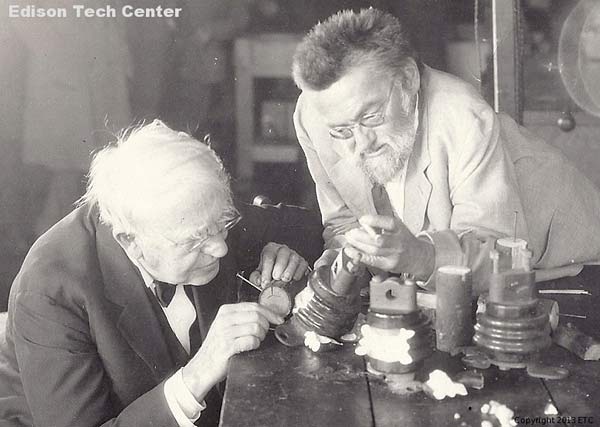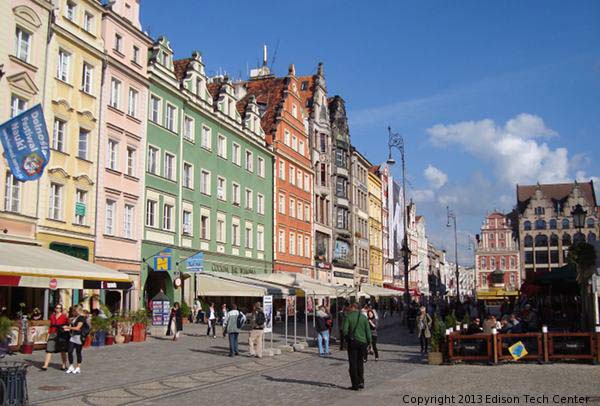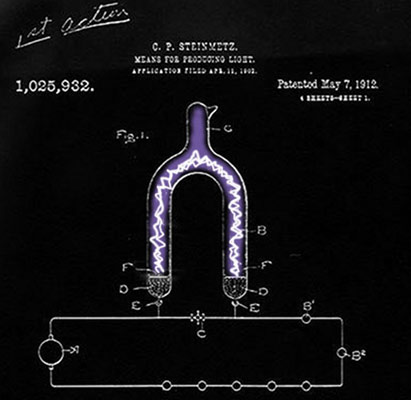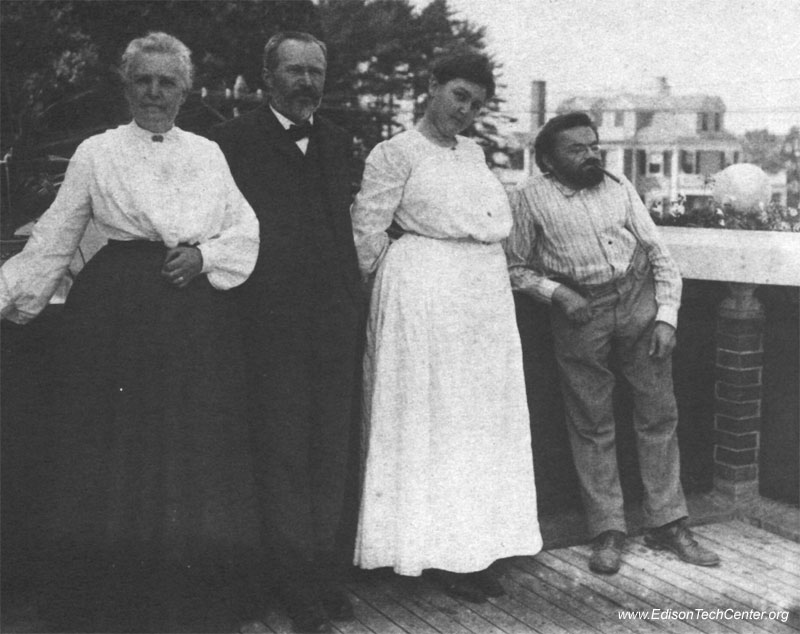Charles Proteus Steinmetz
(April 9, 1865, - October 26, 1923)
1. Concise Biography
2. More Audio, Film and Photos of Steinmetz
3. Extended Biography
... C.P. Steinmetz stands with Thomas Edison and Elihu Thomson as one of the founding fathers of electricity. He was a true engineer's engineer - earning fame and success through the amazing results of his work and genius and not by flamboyant personality. Dr. Steinmetz's tale of escape from Prussia, battle with polio, and rise to fame is a classic story of survival and success. Awards:
AIEE Eliot Cresson Gold Medal,
and many more |
 |
Concise Biography:
Charles Proteus Steinmetz (April 9, 1865, - October 26, 1923) was born in Breslau, Prussia (part of Germany at the time) (now known as Wroclaw, Poland). He developed theories for alternating current that made possible the expansion of the electric power industry in the United States.
Steinmetz studied at the University
of Breslau (Uniwersytet Wroclawski or Universität
Breslau) from 1883-1888. After involvement with a socialist
newspaper he was under suspicion by the government, then ruled
by Kaiser Wilhelm II. He fled the country to Zurich. In Zurich Steinmetz
took courses in electrical engineering and discovered his passion for the field.
From Zurich
he immigrated to New York City where he first worked for Rudolph
Eickemeyer in Yonkers. They spoke the same dialect of Germany
and got along well from the start. Steinmetz published a paper
on magnetic hysteresis which became noticed by the AIEE
(American Institute of Electrical Engineers). E.W.
Rice Jr. of General Electric noticed Steinmetz as well and
tried to get him to join General Electric.
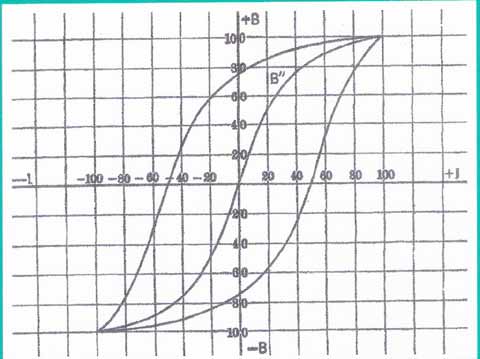
|
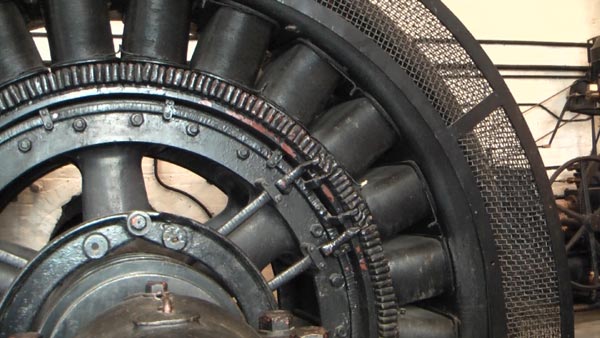
Above: An early AC generator designed by Elihu Thomson and Steinmetz 1895 (Folsom, CA) Left: Hysteresis graphed (the discovery that got him noticed) |
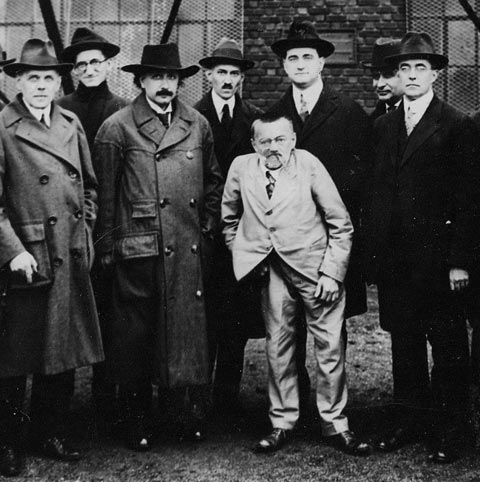
|
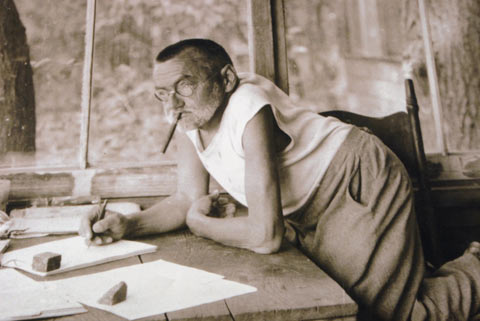
Above: Steinmetz at his camp along the Mohawk River just outside of Schenectady (towards Rotterdam Junction) Photo Left: Left to Right: Ernst Julius Berg, S. Benedict, Albert Einstein, unknown, C.P. Steinmetz, A. N. Goldsmith, A. Malsin, Irving Langmuir. New Brunswick, NJ 1921 |
What was so important about the hysteresis?
Steinmetz figured out the mathematics involved in hysteresis. Hysteresis loops show the behavior
of magnetism in materials. Understanding magnetism in iron cores was and is still key to
design of motors, generators, ballasts and other electrical devices. Steinmetz figured out the great mystery
that all the greats of the time (Thomson, Tesla, Westinghouse, Shallenberger, Edison) had been stumped by.
No one before really understood the physics of what they were experimenting with. This is how young Steinmetz was
able to shock the whole field with his paper and presentation in New York. Understanding electromagnetism became
of increased importance in the 1880s as AC power involved growing and collapsing electromagnetic fields
in devices. The behavior of the core materials (usually soft iron) was not linear. As you move up the curve (see
the diagram above) lots of
energy is required to magnetize the material. Than when poles invert (in AC power) notice how as you move around
the 'circle' it takes more energy to reverse the polarity. Different materials have different hysteresis loop shapes.
Depending on how we design the material we can create materials that are
easier or harder to magnetise or demagnetize.
See our page on Magnetic Recording page to learn more.
Understanding magnetics boils down to quantum
mechanics. It takes a special type of mind with the right educational foundation to understand. See a 20 minute
video here for a full description of hysteresis.
Steinmetz's loyalty to Eickemeyer was strong and he refused to leave despite being interested in General Electric. Legend has it that management of GE then bought Eickemeyer's company in order to get Steinmetz, however GE was also interested in Eickmeyer's transformer patents. He then moved to Lynn, Massachusetts where he worked with Thomson in 1893.
Below: our video with historian George Wise on Steinmetz's life with Eickemeyer
After joining General Electric (one of the two best places to work in the field in the US at the time) Steinmetz and the team developed the some of the world's first 3 phase electrical systems. Steinmetz, Louis Bell and Thomson developed the first commercial 3 phase AC power systems. A former Edison employee C.S. Bradley invented the first 3 phase AC generator, but it was Steinmetz who understood AC systems mathematically and could improve anything he worked on. The 3 phase system won out in the end over Westinghouse's 2 phase system. Find out more about his on our AC Power History Page >
After Lynn, MA he moved to Schenectady, New York where a new GE plant had been set up. Steinmetz became a professor at Union College. He suggested the establishment of the GE Research Laboratory in order to be able to compete with the Germans who where trying to develop a better incandescent bulb than Edison's. The lab quickly produced many other types of inventions including W. Coolidge's x-ray and Albert Hull's Vacuum tube.
Steinmetz taught Electrical Engineering and Electrophysics at Union College. His academic style was reflected in his willingness to help any of the other engineers at the lab, as well as students. He has fewer patents than others but this is probably due to the fact that he allowed others to get the final credit and patents. He did not seek fame or power the way Edison and Tesla did. Edison and Steinmetz may have worked for the same company, but they were quite different in personality. Edison stuck to DC while Steinmetz worked on the most difficult problems of AC power.
Steinmetz worked on the world's first monocyclic power distribution system in Mechanicville, New York. Click the link to learn more about it:
Steinmetz and Radio:
At Union College Steinmetz was Chairman of the Department of Electrical Engineering from 1902-1913. He was probably involved in the creation of radio station 2XQ in 1913 or 1915. On 10/14/1920 there was a historic broadcast as students broadcast a concert by "Radio Telephone". Some claim this was the first scheduled program broadcast for public entertainment in the US (before KDKA on November 2nd 1920.) More on radio history here.
Steinmetz's Personal Life:
Charles Steinmetz lived on Wendell Rd. in a house he designed. He had a green house where he kept "ugly" plants and animals. The cactus was a favorite plant, he also had various reptiles. Steinmetz, like many GE engineers in the beautiful topography of Upstate New York loved the outdoors. He would spend a lot of time in his wood cabin at the banks of the Mohawk River.
Steinmetz loved automobiles, especially electric and steam powered vehicles. The design of the Detroit Electric car allowed him to drive from the back seat.
Below: our video of Steinmetz's 1914 Detroit electric car which was housed at the Edison Tech Center for almost a decade >
Steinmetz and Socialism:
Steinmetz continued his passion and firm believe in socialism as a solution to the world's problems. He worked at Union College and served as mayor of Schenectady. While he worked as a consultant for GE and was promoted as being part of GE's miracle team he was not an employee. He believed that through automation in factories and in our personal lives (appliances) that we could eliminate the need for 'serfs' doing manual labor and that governments or companies could share the profits gained from automation to support the freed 'slaves' of feudal systems. Steinmetz had a lot of hobbies and believed that people supported by the state would blossom in pursuit of personal hobbies and art. As for Steinmetz's beliefs on automation he was right that people have more free time as now a result of appliances doing the work, however in some ways he was not right. Little did he know that automation + capitalism in the future would fail to liberate people from work. While increased profits from automation benefit stock share holders (most of which are already wealthy), the profits do not benefit the poor in the way that he envisioned. It would be interesting to see what he would say about the future if he could see the outcome of what were new ideas in his time. Shortly after a rail trip to California, Steinmetz died in his home in 1923.
To read a longer biography see the lower part of this webpage.
Fame: Steinmetz, Edison, Tesla, an ongoing debate:
In their day, Steinmetz, Edison and Nikola Tesla were all famous, to the point of being household names. Tesla and Edison were flamboyant and often gave public demonstrations of wizardry. Both were showman and egotistical. The worked for attention and they both got it. That public attention for Edison and Tesla have continued to this day. Steinmetz's fame in his day was due to the General Electric marketing machine and not due to Steinmetz's personal insecurities. Steinmetz was the 'engineer's engineer'. Steinmetz was not a recluse like some great engineers, he loved people, sharing ideas with other greats in the industry, and teaching. whereas recollection and retelling of the work of Steinmetz became somewhat rare, to the point where he is no longer widely known to average lay person. In Schenectady and some electrical engineering circles Steinmetz's contributions are well known. He now remains a gem yet to be discovered by mainstream media.
Steinmetz as a consultant:
In the early years of this century, Steinmetz was brought to GE's facilities in Schenectady, New York. GE had encountered a performance problem with one of their huge electrical generators and had been absolutely unable to correct it. Steinmetz, a genius in his understanding of electromagnetic phenomena, was brought in as a consultant -- not a very common occurrence in those days, as it would be now.
Steinmetz also found the problem difficult to diagnose, but for some days he closeted himself with the generator, its engineering drawings, paper and pencil. At the end of this period, he emerged, confident that he knew how to correct the problem.
After he departed, GE's engineers found a large "X" marked with chalk on the side of the generator casing. There also was a note instructing them to cut the casing open at that location and remove so many turns of wire from the stator. The generator would then function properly.
And indeed it did.
Steinmetz was asked what his fee would be. Having no idea in the world what was appropriate, he replied with the absolutely unheard of answer that his fee was $1000.
Stunned, the GE bureaucracy then required him to submit a formally itemized invoice.
They soon received it. It included two items:
1. Marking chalk "X" on side of generator: $1.
2. Knowing where to mark chalk "X": $999.
END
2.) Audio, Film and Photos of Steinmetz:
Below: video featuring GE's greatest pioneers of technology, the only audio recording of Steinmetz is featured along with shots from the 1922 film when Steinmetz meets visiting Edison in Schenectady.

Henry Ford and
Steinmetz: Henry Ford Visits Steinmetz and is made
to wait until he finishes reading his adopted children a book,
story is told by Kolin Hagar, interview by Larry Hart. Kolin Hager
is the first U.S. newscaster at WGY Radio Station.
Steinmetz fixes a Westinghouse Generator: Listen to the above audio file and this story starts from the middle.
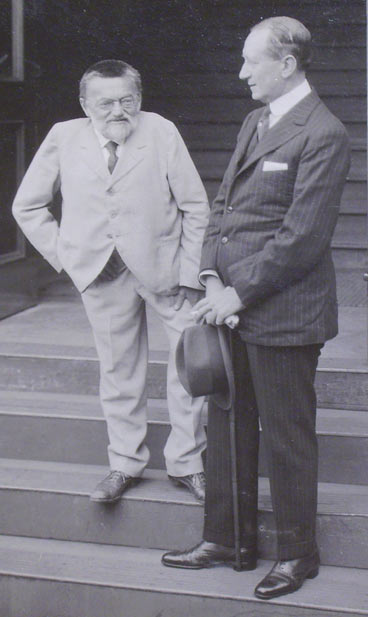
At GE Schenectady
Above: Steinmetz and Thomas Edison examine materials and insulators after artificial lightning strikes. 1922. Steinmetz and Edison did not regularly work together.
Above: Breslau, Prussia (Wroclaw, Poland) where Steinmetz was born and raised. In the 1940s almost all of the residents of Germanic (Prussian) decent had fled, were executed, or sent to the Gulag. Over 100,000 ethnic Poles were brought in from Lviv (Lwow), Ukraine to fill the empty city. If Prussia existed today Steinmetz would be a national hero.
Above: Steinmetz's metal halide lamp patent, the arc path is illustrated with the mercury vapor shown by the cool colored plasma.
Steinmetz invented the metal halide lamp in 1912. This lamp is now used in almost every town and city on the planet. Steinmetz's prototype had problems with maintaining a constant temperature, so it shifted randomly in color from cool blues to warm whites. It wasn't until the 1960's that the lamp became reliable when it was produced in a high pressure form. Learn more about the Metal Halide Lamp >
1904 - Steinmetz with Corinne Hayden and an unidentified couple on his porch at Wendell Ave. (next to Union College today)
3.) Extended Biography:
The following is from
"MEN OF GENERAL ELECTRIC,
Biographical Sketches of Some Outstanding General Electric Men"Charles Proteus Steinmetz, mathematician and electrical engineer was born in Breslau, Germany, where his father was employed as a lithographer in the railroad office. His given name, which he used for about the first twenty-five years of his life, was Karl August Rudolf, bit in his application for American citizenship he Anglicized his first name to Charles and substituted for the other two the name Proteus, a nickname given him when he joined the student mathematical society in Breslau. Although deformed from birth, he was a normally inquisitive, mischievous boy but badly spoiled by his grandmother, who mothered the family after the death of Charles' mother when he was a year old.
It was evident early in his school career that he had a keen mind, and when he had completed the course in the gymnasium his father willingly sent him to the University of Breslau instead of apprenticing him to a trade. He entered the university in 1883. He was decidedly versatile and had an astonishing capacity for study. During his six years at the university he never missed a class, took a prodigious number of notes, and even undertook independent investigations at home. From the very first he selected difficult technical subjects. Beginning with mathematics and astronomy he expanded his studies so that in his sixth year he was taking theoretical physics, chemistry, electrical engineering, specialized work in higher mathematics and medicine. In addition, he was a student of economics and kept up his reading of the classics.
About 1884 he joined the student Socialist group and in the course of the succeeding four years became most active serving for a time as ghost editor of the People's Voice, published by the Socialists at Breslau. This proved his undoing, for as a result of a most daring editorial published in 1888, he had to flee from Germany to avoid arrest and imprisonment just as he had completed his university work and his thesis for his doctor's degree, which was never conferred upon him. Fleeing to Switzerland, where he lived a year in Zurich in straitened circumstances, he spent six months in attendance at the Polytechnic School and occasionally wrote an article on some phase of electrical engineering for a German technical journal.
In the late spring of 1889, on the spur of the moment, he sailed to the United States financed by a student friend who accompanied him. He landed in New York on June 1 and within two weeks found employment as a draftsman for Rudolph Eickemeyer at Yonkers, New York, to whom he had gone with a letter of introduction. Eickemeyer, who was then engaged in research and in the development of electrical machinery, established him in an experimental laboratory of his own. Here he applied himself earnestly not only to the electrical problems given him but also in characteristic fashion, to the problems of Americanizing himself. He mastered the language, applied for citizenship and even joined the American Institute of Electrical Engineers and the New York (later American) Mathematical Society.
At the time, electrical engineers were concerned with reducing the losses of efficiency in electrical apparatus due to alternating magnetism (hysteresis). The laws of this power loss were entirely unknown and many engineers doubted its existence. Steinmetz, however, having been given the task of calculating and designing an alternating-current commutator motor and wishing to calculate the hysteresis loss, derived the law of hysteresis mathematically from existing data. He followed this with an elaborate series of tests on any and every sample of iron obtainable to prove the law and simplify its application and in 1892 read two papers on the subject before the American Institute of Electrical Engineers.
Shortly after the organization of the General Electric Company in 1892 he joined the staff of the Calculating Department and went first to Lynn, Massachusetts and then to Schenectady, New York. After completing his second year with the Company he was made consulting engineer, a position he held throughout the rest of his life.
While he was engaged in his studies of magnetism at Yonkers he had begun studies of alternating electric current phenomena, which were then little understood and most complex. Through the application of pure mathematics involving a degree of intricate work bewildering to the layman, he found a mathematical method of reducing the alternating-current theory to a basis pf practical calculation, and presented a rather complicated outline of the new method to the International Electrical Congress in session at Chicago, Illinois, in 1893. He found himself in unapproachable intellectual solitude however, for practically no one could understand his theory or use his method. Gradually however, through the publication of several textbooks he brought about a clear understanding of his symbolic method, which is now universally used in alternating-current calculations.
His third and last great research undertaking had to do with the phenomena which are centered in lightning. In an effort to learn more about lightning, Steinmetz began a systematic study of it, publishing the dramatic experiments yielding man-made lightning in the laboratory.
In addition to his consulting work and his writing, he was professor of electrical engineering, 1902-1913 and professor of electrophysics, 1913 to 1923 at Union University, Schenectady, New York, and lectured on electrical subjects throughout the country. He served on the Board of Education of Schenectady, of which he was president for two terms, and on the Common Council. The numerous honors conferred on him included the presidency of the American Institute of Electrical Engineers, 1901 to 1902, the award of the Elliott Cresson Gold Medal, made by the Franklin Institute, Philadelphia and membership in the American Academy of Arts and Sciences and the American Philosophical Society. He patented a large number of inventions, many of them basic, and wrote several books, among them Theory and Calculation of Transient Electric Phenomena and Oscillations (1909); General Lectures on Electrical Engineering (copyright 1908), compiled and edited by J. L. Hayden; Radiation, Light and Illumination (1909); and Elementary Lectures on Electric Discharges, Waves and Impulses, and Other Transients (1911), all of which went through several editions.
He never married but legally adopted as his son and heir Joseph Le Roy Hayden, who survived him.
Books on Steinmetz:
"Steinmetz in Schenectady" by Larry Hart(we sell this, Contact Us)
"The Life of Steinmetz" by Jonathan Leonard (out of print)
"The Man Who Tamed Lightning" by Floyd Miller (out of print)
"Men and Volts the Story of General Electric" by John Winthrop Hammond (out of print)
"Workshop of Engineers" by Floyd Miller (out of print)Electrical Engineering Library: Visit the Edison Tech Center to see our collection of out-of-print books on Steinmetz
Connected Pioneers:

Ernst F.W. Alexanderson - pioneer in wireless and TV transmission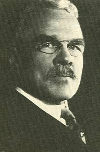
Charles Curtis - pioneer of steam turbines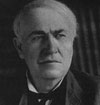
Thomas Alva Edison - Over 1000 patents from consumer goods to industrial needs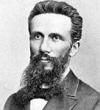
Galileo Ferraris - Early AC power pioneer. Inventor of the polyphase AC motor.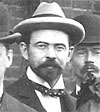
Edwin W. Rice, Jr - AC power systems pioneer. Leader of the electrical industry.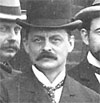
Elihu Thomson - improved DC and AC power systems, arc lights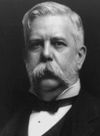
George Westinghouse - innovator in many technologies, business leader.
Related Topics:

All types of Electric Motors
Electrical Steel and Iron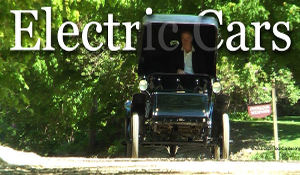
Electric Cars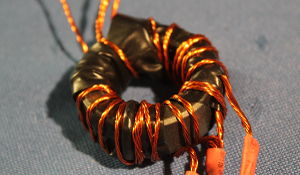
Transformers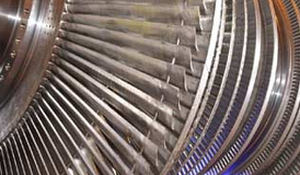
Steam Turbines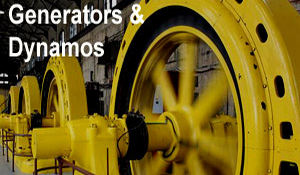
Dynamos and Generators
Article by M.Whelan and Edwin Reilly Jr.
Sources:
"Men and Volts" by John Hammond
"Workshop of Engineers" by John Miller
"Interview with George Wise" - video interview with historian George Wise. Edison Tech Center Photos:
General Electric Company (various photographers unknown),
Edison Tech Center
Hawkins Electrical Guide 1912
The Schenectady Museum (MiSci)
If you are a historian and wish to correct facts or publish a commentary or embedded article feel free to contact us.
Image Use:
Photos:: Permission and fees are required for use of photos in printed or internet publications.
Educational Use:: Students and teachers may use photos and videos at school. Graphics and photos must retain the Edison Tech Center watermark or captions and remain unmanipulated except for sizing.
Videos:: DVDs are available for personal/educational use. Republication of any part or whole of any ETC video requires a professional license agreement. Contact us for legal permissions and fees.



